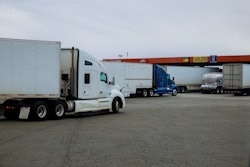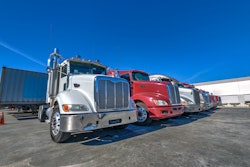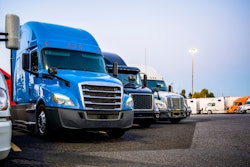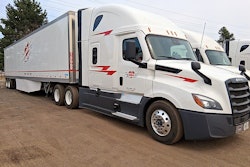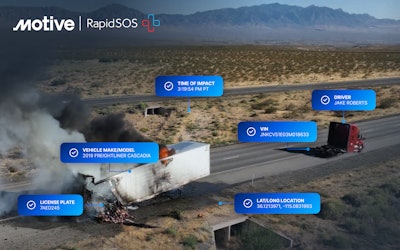
Motive has rolled out a new emergency response feature on its fleet management and driver safety platform.
With the holidays just around the corner, traffic across the U.S. will be picking up as drivers hit the road to visit family and increased retail purchases spur more shipment activity. With more vehicles on the road during winter weather, the likelihood for accidents escalates.
Motive’s First Responder service for commercial vehicle drivers aims to save more lives when severe collisions occur by getting emergency assistance at the site of an accident faster.
"First Responder transforms the way we support drivers in a collision and will save lives," said Motive CEO and co-founder Shoaib Makani. "By reducing the time it takes for 911 to verify incidents and dispatch help, we are taking a critical step toward achieving zero harm and zero preventable accidents, keeping everyone on the road safer."
Motive’s platform detects 99% of high-severity collisions, including those when a vehicle is damaged or a driver is incapacitated. Motive uploads video to the cloud within 20 seconds after an accident, and Motive’s 400-plus member safety team reviews every safety event video within 30 seconds to confirm the collision and eliminate false positives, ensuring only verified incidents trigger alerts. Once confirmed, companies are immediately notified through the fleet app and via text and email.
Fleets can message the driver or start a live stream on the dashcam if it is operable, and they can stay informed with live updates of the situation via the Motive app.
With the First Responder feature, a red box that says “life-threatening collision detected” will appear on the event detail page on the fleet app in the event of a severe collision, and the fleet’s safety team will have the option to get a priority phone number that directly connects them to local emergency dispatchers, bypassing wait times. It also provides a script so fleet managers can relay all the critical information to emergency services, ensuring no detail is left out. Motive
Motive
The new feature was developed in partnership with RapidSOS, a safety company that connects over 21,000 public safety agencies in six countries to data from over 540 million connected devices, apps and sensors from more than 200 global technology companies.
Key details that identify the driver, vehicle (make, model and license plate number) and accident location are sent to emergency dispatchers via RapidSOS’s API, allowing them to deploy the most effective emergency services and deliver higher quality care at the scene. The RapidSOS dashboard is free for all 6,000-plus 911 centers around the country. The dashboard integration covers 99.99% of the U.S. population, and over 21,000 first-responder agencies use the service.
“I cannot overstate the importance of a technology that initiates rapid emergency response. The preservation of life and the prevention of further injury is dependent on seconds, not minutes,” said Jared Whitson, director of safety at the Bennett Family of Companies. “Motive’s AI-powered collision detection and First Responder will bring an essential layer of safety to drivers and provide organizations with confidence that accurate information is provided to emergency services. This technology will set a new standard for the industry.”
There was an all-time high of nearly 50,000 road fatalities last year, and new Motive data shows that the holiday season is rife with accidents.
[RELATED: Accident data suggests U.S. roads are more dangerous than ever]
Among all U.S. holidays, Christmas saw the highest crash rate, followed by Martin Luther King Jr. Day, New Year’s Day, and Thanksgiving, indicating winter months are particularly dangerous, not only because of increased traffic but also because of weather. Bad weather increases risks, with 65.5% of Christmas collisions occurring on wet or snowy roads, according to Motive data. In 2023, there was a 32% increase in commercial vehicle crash rates on Christmas Day, compared to the rest of December, and a 10% increase in speeding events the week leading up to Christmas.
Survival rates increase by 13% for every minute that first responders arrive faster at the scene of a collision. The First Responder feature can speed the process even more by reducing the amount of time it takes for 911 to verify incidents and by helping dispatchers deploy appropriate resources faster.







